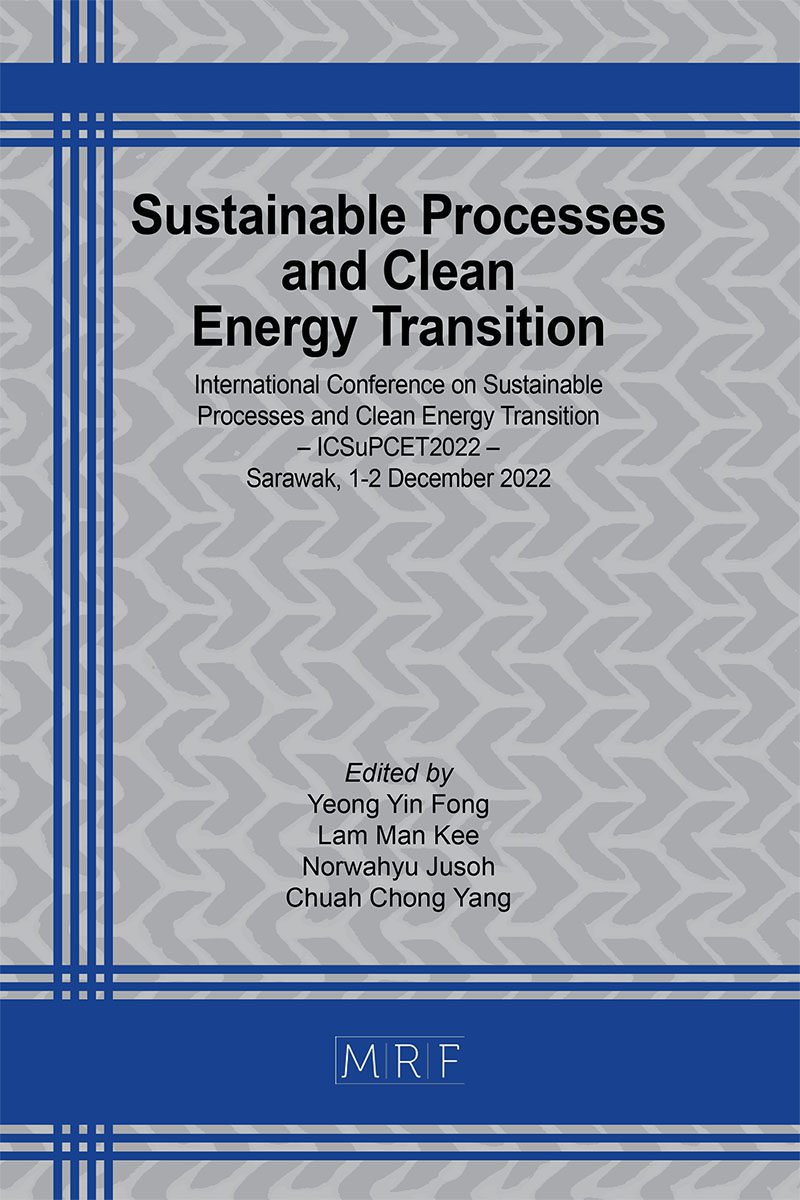Towards green extraction: A study on solvent selection and methods for antioxidant activities of Diplazium esculentum Retz. and Stenochlaena palustris
HAZIMAH Sharifulazar, AIDA Maryam Basri, MASAYOSHI Arai
download PDFAbstract. Green extraction method by combination of stirring method with no presence of heat and the use of aqueous as solvent were highlighted in this study. Various solvents (aqueous, chloroform, ethyl acetate, hexane and methanol) and two extraction methods (stirring and Soxhlet) were used to study their effect on the yield, qualitative phytochemical content, and antioxidant properties of Diplazium esculentum Retz. and Stenochlaena palustris. Stirring extraction method in aqueous has shown to provide highest yield in both plant species with D. esculentum at 8.88% and S. palustris at 9.40%. Saponin was also seen present in both aqueous extracts qualitatively. In the case of FRAP (Ferric Reducing Antioxidant Power) assay, aqueous extract of D. esculentum (DEA) had the highest value with 687.57 + 0.01 μg Fe(II)E/ml, while stirring method in various solvents had shown to produce high antioxidant activities compared to Soxhlet method. This study revealed that aqueous extracts by stirring method is a promising method for extraction of plant materials and at the same time leading towards a green environment.
Keywords
Aqueous, Green Extraction, Antioxidant, Diplazium Esculentum Retz., Stenochlaena Palustris
Published online 5/20/2023, 7 pages
Copyright © 2023 by the author(s)
Published under license by Materials Research Forum LLC., Millersville PA, USA
Citation: HAZIMAH Sharifulazar, AIDA Maryam Basri, MASAYOSHI Arai, Towards green extraction: A study on solvent selection and methods for antioxidant activities of Diplazium esculentum Retz. and Stenochlaena palustris, Materials Research Proceedings, Vol. 29, pp 493-499, 2023
DOI: https://doi.org/10.21741/9781644902516-56
The article was published as article 56 of the book Sustainable Processes and Clean Energy Transition
![]() Content from this work may be used under the terms of the Creative Commons Attribution 3.0 license. Any further distribution of this work must maintain attribution to the author(s) and the title of the work, journal citation and DOI.
Content from this work may be used under the terms of the Creative Commons Attribution 3.0 license. Any further distribution of this work must maintain attribution to the author(s) and the title of the work, journal citation and DOI.
References
[1] J. Oh, H. Jo, A. R. Cho, S.‐J.Kim & J. Han, Antioxidant and antimicrobial activities of various leafy herbal teas. Food Control. 31(2) (2013) 403-409. https://doi.org/10.1016/j.foodcont.2012.10.021
[2] A. Semwal, M.S. Farswan, K. Upreti, K. Bhatt, & K. Upadhyaya, Evaluation of antioxidant activity of some pteridophytes. Int. J. Herb. Med. 1(1) (2013).
[3] A.H. Ndanusa, D. Cicuzza, & M.M. Siddique, Analysis of the phytochemical contents and anti-oxidative properties of Stenochlaena palustris. Int. Food Res. J. 27(5) (2020).
[4] S. Carpentieri, F. Soltanipour, G. Ferrari, G. Pataro, F. Donsì, Emerging Green Techniques for the Extraction of Antioxidants from Agri-Food By-Products as Promising Ingredients for the Food Industry. Antioxidants. 10, (2021) 1417. https://doi.org/10.3390/antiox10091417
[5] N. N. Azwanida, A review on the extraction methods use in medicinal plants, principle, strength and limitation. Med. Aromat. Plants, 4:3 (2015).
[6] G. E. Trease and W. C. Evans, Pharmacology. 11th ed. London: Bailliere Tindall Ltd (1989)
[7] S. Akter, M.M Hossain, I. Ara & P. Akhtar, Investigation of in vitro antioxidant, antimicrobial and cytotoxic activity of Diplazium esculentum (Retz). Sw. Int. J. Adv. Pharm. Biol. Chem. 3(3) (2014).
[8] N. S. Rajurkar & S. M. Hande, Estimation of phytochemical content and antioxidant activity of some selected traditional Indian medicinal plants. Indian J. Pharm. Sci. 73(2) (2011). https://doi.org/10.4103/0250-474X.91574
[9] P. Tipduangta, J. Julsrigival, K. Chaithatwatthana, N. Pongterdsak, P. Tipduangta & S. Chansakaow, Antioxidant properties of Thai traditional herbal teas. Beverages, 5(3), (2019) 44. https://doi.org/10.3390/beverages5030044
[10] M.S. Stankovic, Total phenolic content, flavonoid concentration and antioxidant activity of Marrubium peregrinum L. extracts. Kragujevac J. Sci, 33, (2011) 63-72.
[11] N. Wuttisin, T. Nararatwanchai & A. Sarikaputi, Total phenolic, flavonoid, flavonol contents and antioxidant activity of Inca peanut (Plukenetia volubilis L.) leaves extracts. Food Research, 5(1) (2021). https://doi.org/10.26656/fr.2017.5(1).346
[12] QW. Zhang, LG. Lin & WC. Ye, Techniques for extraction and isolation of natural products: a comprehensive review. Chin. Med. 13, 20 (2018). https://doi.org/10.1186/s13020-018-0177-x
[13] M. Flórez, P. Cazón, M. Vázquez, Antioxidant Extracts of Nettle (Urtica dioica) Leaves: Evaluation of Extraction Techniques and Solvents. Molecules 2022, 27, 6015. https://doi.org/10.3390/molecules27186015
[14] A. Samad, S. Makhbar, H. Sharifulazar, A. M. Basri & S. A. Lim, The effects of Diplazium esculentum Retz. and Stenochlaena palustris incorporated with sodium alginate as edible coating on packaged figs (Ficus carica L.): A preliminary study. J. Food Process Preserv. 46(7), (2022). https://doi.org/10.1111/jfpp.16611































